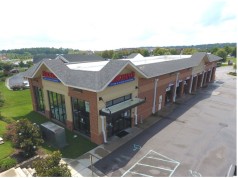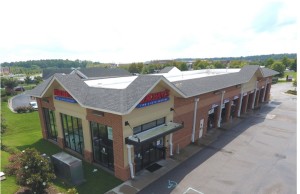County Board to Discuss Affordable Housing Master Plan, Implementation Framework in Work Session
Board to hold public hearing, vote on plan in September
Plan addresses affordable housing distribution
WASHINGTON, D.C. – September 2, 2015 – (RealEstateRama) — The Arlington County Board tonight will discuss recent staff updates to the Affordable Housing Master Plan and Implementation Framework. The purpose of the work session is to address remaining Board member questions in advance of the County Board’s September 19 meeting to consider adoption of the Plan.
The County is seeking a 25-year Plan that will guide the next generation of affordable housing investment in Arlington because providing a range of housing options affordable to persons of all income levels and needs throughout the County supports our people, improves our neighborhoods and strengthens our economy.
“The Plan our community has worked on for nearly three years is a great step forward from where we are today,” said Arlington County Board Chair Mary Hynes. “We all share the same goals for Arlington: we all want high-quality neighborhoods and schools, we all want housing to be accessible and fairly distributed, and we all want a sustainable, strong economy. To support these goals, the Board is considering and addressing a wide range of factors related to our mix of housing. When all is said and done, following the Board’s final consideration in September, this Plan will be an important road map for preserving and expanding the supply of affordable housing across Arlington.”
In June, the County Board voted to set September public hearings and requested the County Manager to collect more community feedback on key issues such as geographic distribution of affordable housing. As a result, a number of changes have been made to the draft plan.
Affordable Housing Master Plan clearly addresses distribution
The plan addresses geographic distribution with a three-tiered solution grounded in Arlington’s long-held transit-oriented development policies.
- Preserving existing affordable units. Preservation of committed affordable housing units and market rate affordable housing unites means that existing housing, such as Arlington’s historic garden apartments, will be preserved.
- Locating affordable housing close to transit corridors, including bus routes. Pairing housing units with reliable transportation options is a sustainable way to reduce traffic, allow easy access to jobs and services and promote a walkable community.
- Flexible land use and zoning policies. Adjusting land use and zoning policies to allow a variety of housing types beyond urban corridors. High housing costs and changing family structures can mean that existing homes don’t always meet the needs of Arlington residents. This would allow single-family neighborhoods to provide quality, affordable choices for multi-generational households, older individuals living on their own, young working people and others. Further study will investigate what changes could maintain neighborhood character while allowing housing choices to evolve.
Building off of – and moving beyond – existing sector plans, specific transportation corridors are identified and goals for the number of affordable housing units for those corridors are proposed. The Plan, when implemented, would strive to ensure that about 17.7% of Arlington’s housing stock (down from 25% in 2000) is affordable to those making 60% of area median income.
Implementation Framework includes existing and potential tools
Arlington has a track record of successfully investing in affordable housing development and tools. The proposed Implementation Framework is a tool kit of new and existing strategies that could be used separately or in combination to achieve the goals of the plan. Tools outlined in the framework include:
- Financial assistance to support the construction, acquisition and rehabilitation of affordable housing
- Land use regulations and incentives that leverage private development activities to increase the supply of affordable housing
- Programs designed to help low-income and at-risk populations find and maintain safe and affordable housing.
Some new tools would require additional Board action or could involve working with the General Assembly.
Near-term priorities in the implementation plan are budget-conscious, and focus on revisiting planning and zoning tools before financing tools.
Staff will develop a monitoring and evaluation plan that annually reports and tracks the County’s progress toward goals and objectives. Staff anticipates this report to be ready by the end of 2016.
About the Affordable Housing Study
The County Board initiated the Affordable Housing Study in 2012 to evaluate existing policies; assess current programs and resources; and identify needs and gaps in provisions for affordable housing.
The County Manager appointed a 19-member Affordable Housing Study Working Group to shape the community’s affordable housing vision. Together with County staff, the group drafted the Affordable Housing Master Plan, to be included as an element of the County’s Comprehensive Plan.
By 2040, 17.7 percent of Arlington’s households are projected to be low-income — at or below 60 percent of the Area Median Income (AMI). Sixty percent of AMI today is $64,480 for a household of four.
Recommendations in the proposed Affordable Housing Master Plan were based on research, athorough needs analysis, in-depth forecasting, surveys, working group meetings and community workshops. The plan proposes three goals that focus on housing supply, access and sustainability. The Implementation Framework proposes modifications to existing tools and potential new tools in the areas of financing, land use and services.
View the Draft Affordable Housing Master Plan.
View the Draft Implementation Framework.
To learn more about the Affordable Housing Study, visit the County website.
Arlington Va., is a world-class residential, business and tourist location that was originally part of the “10 miles square” parcel of land surveyed in 1791 to be the Nation’s Capital. Slightly smaller than 26 square miles, it is the geographically smallest self-governing county in the United States, and one of only a handful with the prized Aaa/AAA/AAA bond rating. Arlington maintains a rich variety of stable neighborhoods and quality schools, and has received numerous awards for Smart Growth and transit-oriented development. Home to some of the most influential organizations in the world — including the Pentagon — Arlington stands out as one of America’s preeminent places to live, visit and do business.
Media Contacts
Jessica Margarit
703-228-3551




